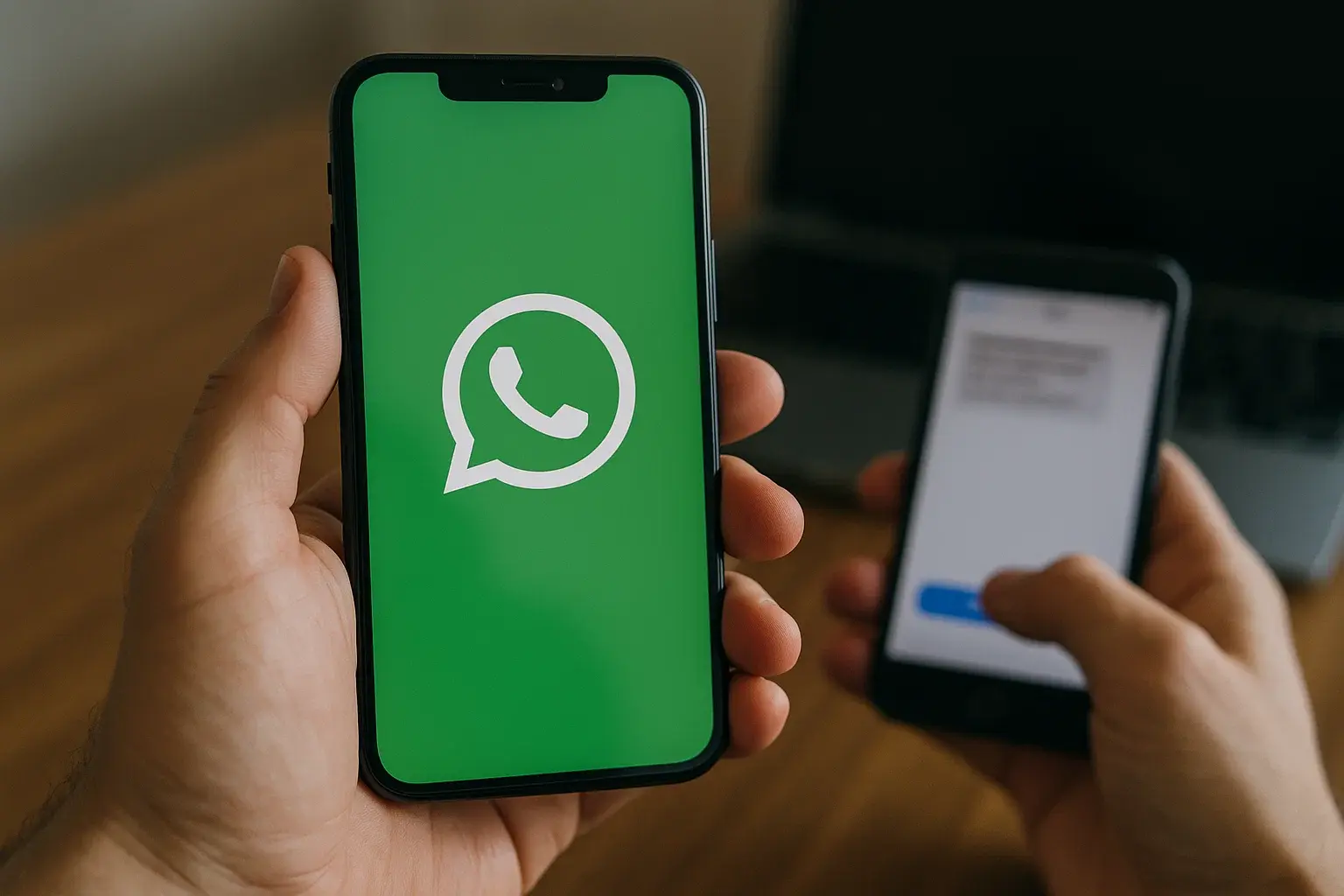WhatsApp is without a doubt one of the most widely used apps in the world. You use it to talk to family, coordinate with friends, work in teams, and even receive banking or service-related information. That’s exactly why cybercriminals see it as fertile ground for increasingly sophisticated scams.
In recent weeks, researchers at Gen Threat Labs and cybersecurity company Bitdefender have revealed a dangerous campaign spreading across several countries, including Latin America. This scam can give an attacker full access to your WhatsApp account, conversations, and contacts.
In this TecnetOne article, we’ll explain how this scam works, what warning signs to watch for, and what steps you can take to protect yourself.
How Does the New WhatsApp Scam Work?
The attack starts simply: you receive a message from someone you know—perhaps a friend, relative, or coworker. The message usually says:
“Hey, I accidentally found your photo”
Alongside the message, there’s a shortened link (something like a Bit.ly URL). The goal is to make you think it’s a harmless mistake and get you to click without suspicion.
The Fake Facebook Login Trap
When you click the link, it doesn’t show you any photo. Instead, it opens a page designed to look exactly like Facebook’s login page—colors, logo, typography, and even the “log in to continue” message.
If you enter your Facebook username and password, you’re handing over your credentials directly to the attacker.
And here’s the worst part: those stolen credentials are used to exploit WhatsApp’s “linked devices” feature.
Step-by-Step Breakdown of the Infection
- Phishing: You fall for the trick and enter your login info on the fake page.
- Token Theft: The attackers steal the session tokens that Facebook and WhatsApp use behind the scenes.
- Silent Linking: With those tokens, criminals generate a valid QR code that lets them link your WhatsApp Web to their own devices.
- Full Access: In minutes, they can read your chats, view files, access contacts, and even message people as if they were you.
The most alarming part? You don’t receive any notification on your phone when this happens.
.webp?width=714&height=502&name=Phishing%20message%20(Source%20-%20X).webp)
Phishing message (Source: X)
What Happens If Your WhatsApp Is Hijacked?
An intruder in your account means more than just stolen messages. The consequences can include:
- Financial fraud: If your chats include banking details, transfers, tokens, or receipts, they can be used to empty your accounts.
- Identity theft: The attacker can message your contacts to ask for money, share malicious links, or spread disinformation.
- Privacy breach: Photos, audio, documents—everything becomes accessible to the criminal.
- Extortion: If they find sensitive material, they may threaten to leak it unless you pay up.
One click can compromise your digital security, reputation, and finances.
Why This Scam Is Especially Dangerous
While phishing scams are common, this one stands out due to:
- Use of real contacts: Because the message comes from someone you trust, you’re more likely to fall for it.
- Constant domain rotation: Attackers change URLs almost hourly, making them hard to block.
- Stealth persistence: The fake site may prompt you to install a “privacy extension,” which actually helps the attacker maintain access.
- AI-powered automation: They use tools like Puppeteer to mimic human behavior and avoid detection by WhatsApp and Facebook’s security systems.
Learn more: Fake Cryptocurrency Apps on Facebook: How They Steal Your Data
How to Spot the Scam
Look for these common signs:
- Unexpected messages from known contacts with short text and shortened links.
- Login pages asking for your credentials outside official apps.
- Prompts to install browser extensions promising “extra security.”
- Login or access alerts in your Facebook email or account settings.
Tips to Stay Protected
At TecnetOne, we always emphasize prevention. Follow these practical steps:
- Don’t trust shortened links: Verify with your contact before clicking.
- Never enter login info on external pages: Use only official apps or secure HTTPS sites.
- Enable two-step verification in WhatsApp: Adds an extra PIN layer to protect your account.
- Check your linked devices: In WhatsApp, go to Settings > Linked Devices.
- Keep your browser and system updated: Patches close vulnerabilities.
- Use a password manager: Avoid reusing passwords.
- Educate your team and family: Awareness is your first line of defense.
Read more: WhatsApp launches Private Processing to Enable AI Features
What to Do If You’ve Been Targeted
If you suspect you fell for the scam, act fast:
- Change your Facebook password and enable two-factor authentication.
- Log out of all Facebook and WhatsApp Web sessions.
- Check linked devices in WhatsApp and remove unknown ones.
- Uninstall any suspicious browser extensions and reset your browser.
- Run a malware scan on your device.
- Warn your contacts to prevent the scam from spreading.
Final Thoughts
Cybercrime continues to evolve. Attackers now need just one message, one cloned site, and a bit of social engineering to wreak havoc.
At TecnetOne, we know no one is immune—but you can be prepared. Combine safe browsing habits with modern security tools and always have an incident response plan ready.
Next time you get a strange message on WhatsApp—pause, verify, and protect your data. One click could be the difference between safety and digital disaster.


